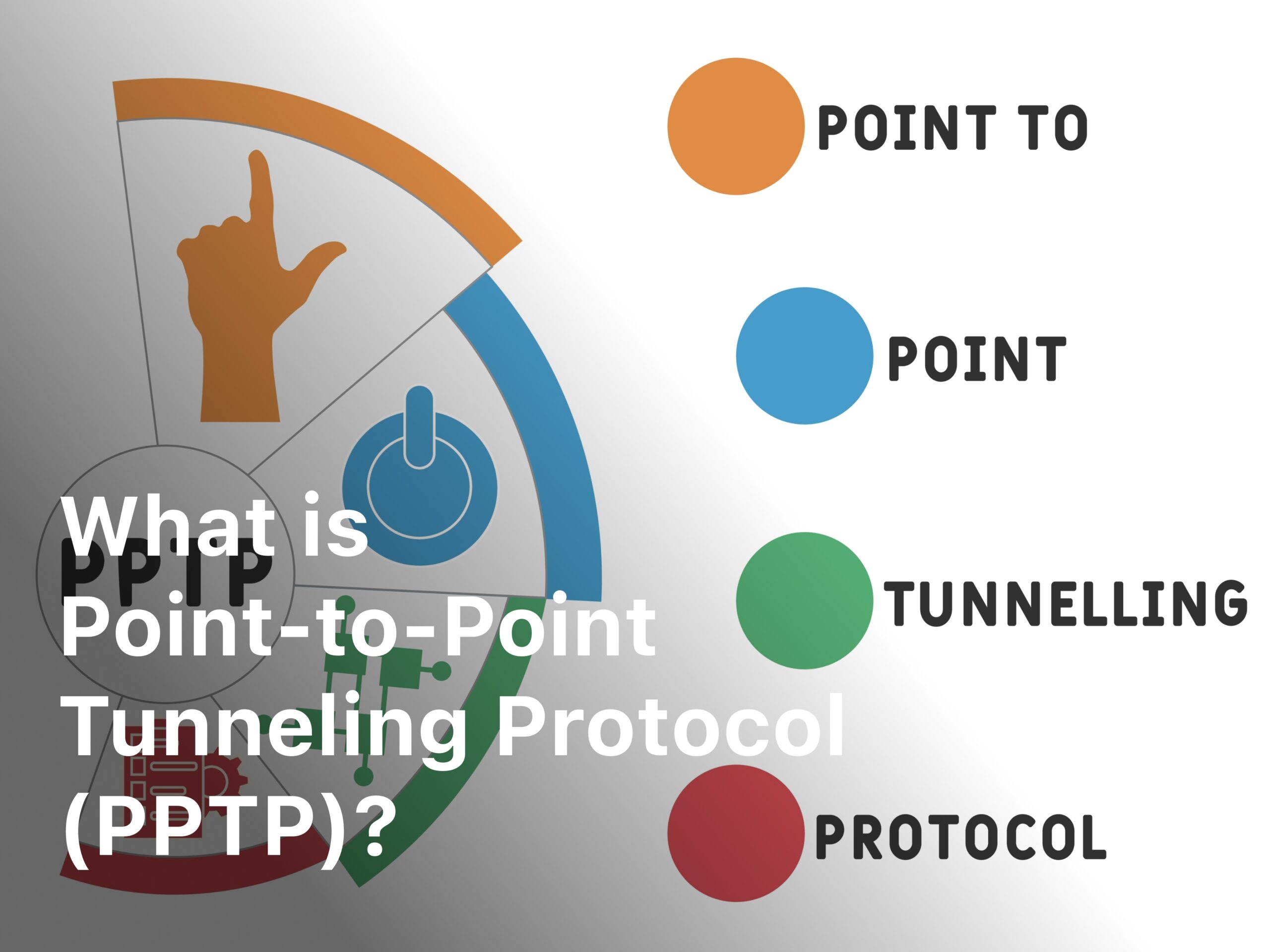
Ever wonder how you’re able to access your work files or stream your favorite shows when you’re not at the office? Chances are you’ve used a virtual private network or VPN without even realizing it. VPNs create an encrypted tunnel between your device and a server, hiding your online activity and location. One of the earliest VPN protocols created was Point-to-Point Tunneling Protocol or PPTP.
Though PPTP has been around since the late 1990s, it’s still used today by many VPN services to provide remote access and connectivity. PPTP allows you to securely access a private network like your work or school network from a remote location. It uses encryption to create a virtual tunnel, hiding the details of your internet traffic and giving you privacy online.
While PPTP isn’t the most advanced protocol out there today, it helped pioneer easy-to-use VPN technology. In this article, we’ll explore what PPTP is, how it works, its pros and cons, and alternatives to consider. Ready to dive into the world of VPNs and uncover the secrets of PPTP? Let’s get started.
What Is Point-to-Point Tunneling Protocol (PPTP)?
Point-to-Point Tunneling Protocol (PPTP) is a networking protocol that enables the creation of virtual private networks (VPNs). It allows the secure transmission of data between a client and a server over a public network, such as the internet.
PPTP establishes a point-to-point connection between the client and the server, creating a secure tunnel for data transmission. It encapsulates the data packets within PPP frames and then encapsulates them again within IP packets for transmission over the network.
PPTP is known for its ease of setup and compatibility with various operating systems, making it widely supported by devices and software. It provides authentication and encryption mechanisms to ensure the privacy and integrity of the transmitted data.
While PPTP has been widely used in the past, it is now considered to have security vulnerabilities and is not recommended for secure communications. It has been largely replaced by more secure VPN protocols like OpenVPN, IPsec, or WireGuard.
For basic networking needs though, PPTP gets the job done. It’s a simple way to create a VPN for secure data and resource sharing between locations. If you have networks in multiple places, PPTP can help connect them and make them act as one.
How PPTP Works
PPTP creates a virtual private network (VPN) between two networks over an untrusted network, like the internet. It uses a process called tunneling to securely encrypt and transport data.
To understand how PPTP works, think of it this way:
- Your device connects to the internet through an internet service provider (ISP).
- Your device then establishes a PPTP VPN connection to a VPN server, which acts as a gateway to the remote network. This connection is called a VPN tunnel.
- All your internet traffic gets routed through this encrypted VPN tunnel, hiding your activity and location.
- The VPN server then decrypts the data and routes it to the remote network. Data going from the remote network back to your device goes through the same process in reverse.
PPTP uses a protocol called Point-to-Point Protocol (PPP) to establish the initial VPN connection and MPPE (Microsoft Point-to-Point Encryption) to encrypt data. Authentication uses MS-CHAP v2 (Microsoft Challenge Handshake Authentication Protocol).
The main downside of PPTP is that MS-CHAP v2 authentication isn’t the strongest, and MPPE encryption is also relatively weak. However, PPTP is easy to set up and works on most devices. For higher security, you may want to use a VPN protocol like OpenVPN or IPSec instead.
PPTP may be a simple solution, but for many casual users and basic needs, it can provide an easy way to stay secure on public Wi-Fi hotspots and evade geographic restrictions. When configured properly, PPTP VPNs offer an adequate level of privacy and anonymity for most everyday internet usage.
PPTP vs Other Protocols: Pros and Cons
Security
PPTP is generally considered less secure than other VPN protocols like OpenVPN or IPSec. It uses weaker encryption and authentication methods that are more prone to hacking. The PPTP protocol itself hasn’t been updated since the 1990s, so it lacks many modern security features. If security is a top concern, PPTP may not be the best choice.
Ease of Use
On the other hand, PPTP is very easy to set up and configure since it’s built into Windows and many routers. You don’t need to install any additional software to get started. The setup process is fairly straightforward, requiring you to enter some basic information like your username, password, and VPN server address. This simplicity makes PPTP a good option if you’re not technically inclined or just want to quickly connect to a VPN.
Compatibility
PPTP also has very wide compatibility since it’s supported on all major platforms like Windows, Mac, Linux, Android and iOS. So regardless of which devices you want to use the VPN on, PPTP should work. The downside is that some platforms like Mac OS and iOS only support PPTP for legacy reasons and may remove support for it eventually due to its security issues.
Performance
In terms of performance, PPTP typically provides decent speeds but may be a bit slower than other protocols. It can reduce your bandwidth by 10-30% since it uses an older tunneling technology. For most casual uses like streaming media or web browsing this shouldn’t be too noticeable, but for gaming or torrenting the speed difference could be significant.
Overall, PPTP has some advantages when it comes to ease of use and compatibility, but it lacks in security and performance compared to modern VPN protocols. For many basic needs it can work fine, but if you need a more robust, full-featured VPN, you’re probably better off choosing a different protocol like OpenVPN or IPSec.
Setting Up a PPTP VPN

Setting up a PPTP VPN on your devices allows you to securely connect to a private network over the public internet. Follow these steps to get connected:
Install VPN software
You’ll need to install VPN client software on the devices you want to connect, like your Windows PC, Mac, Android phone, or iPhone. Many VPN services offer free apps to download and install. The software allows your device to connect to the VPN server.
Sign in
Open the VPN app on your device and sign in with the username and password provided by your VPN service. This authenticates your account and allows you access to the VPN server.
Connect to a server
Select a VPN server location to connect to. Choose a location close to you for the fastest speeds. The VPN server acts as the entry point to the private network. When you connect, all your internet traffic will be routed through this server.
Enable encryption (optional)
PPTP uses Microsoft Point-to-Point Encryption (MPPE) to encrypt all data sent between your device and the VPN server. You can choose between 40-bit or 128-bit encryption. 128-bit encryption is more secure and recommended. Enable this feature in the VPN app settings if available.
Connect!
Click “Connect” or “Turn on VPN” in the VPN app to establish an encrypted tunnel between your device and the VPN server. Your internet connection will now be routed through the VPN, hiding your online activities and location.
To disconnect from the VPN, just click “Disconnect” or “Turn off VPN” in the VPN app. All your traffic will go back to normal and the encrypted tunnel will be closed. Using a PPTP VPN helps ensure your privacy and security anytime you access the internet. Let me know if you have any other questions!
Related Article : 31 Internet safety memes everyone should see!
PPTP Security Concerns and Alternatives
PPTP has been around for decades and was once a popular VPN protocol, but it does have some significant security concerns you should be aware of.
Encryption Issues
PPTP uses weak encryption (MPPE) that can be cracked. Your data and communications could be accessed by others. Stronger protocols like OpenVPN or IPSec are better options if security is a top priority.
Authentication Problems
PPTP also uses weak authentication methods that are vulnerable to brute force attacks. Your PPTP VPN credentials could be compromised, allowing others to access the network. Two-factor authentication can help but isn’t foolproof.
Limited Privacy
Since PPTP has known security issues, it does not provide a high level of privacy. Your online activities, downloads, and communications could potentially be monitored by third parties. If privacy is important, choose a more secure protocol.
Alternatives to Consider
Instead of PPTP, consider these safer and more private alternatives:
- OpenVPN – Open source, highly secure. Uses strong encryption and authentication. More complex to set up but worth it.
- IPSec – Built-in to many operating systems. Also uses strong encryption and authentication. Easier to implement than OpenVPN.
- Wireguard – New, open source protocol gaining popularity. Uses state-of-the-art encryption and simple setup. Promising but still being audited.
- Commercial VPN services – Offer OpenVPN, IPSec or proprietary protocols. Handle the technical setup for you but you rely on their security practices.
While PPTP may be convenient, its vulnerabilities outweigh the benefits for most users today. For the best security and privacy, choose a VPN solution that implements strong, modern protocols and authentication methods. Your data and communications will be much safer as a result.
Conclusion
So there you have it, a quick overview of PPTP and how it works. While PPTP may not be the latest and greatest VPN technology out there anymore, for basic needs it can still get the job done and allow you to surf the web securely. If enhanced security and faster speeds are priorities, you’ll probably want to look at options like OpenVPN or IPsec. But when you just need a simple way to access region-locked content or mask your IP address, PPTP will do in a pinch. Now you’re all set to configure your devices, fire up that VPN, and start tunneling your way to internet freedom. Happy surfing!





